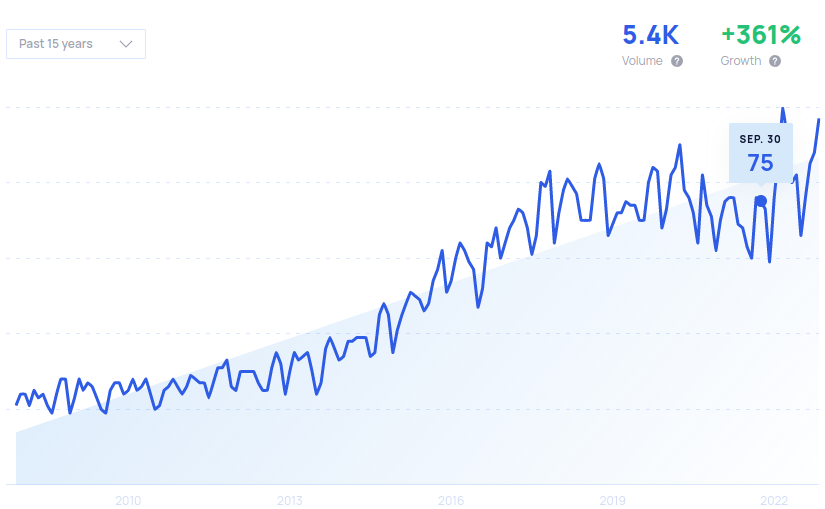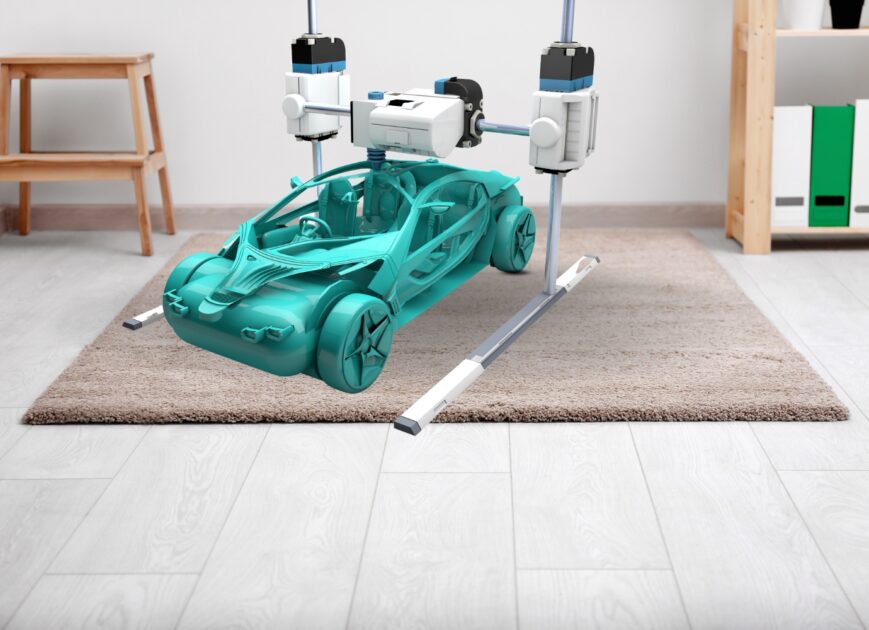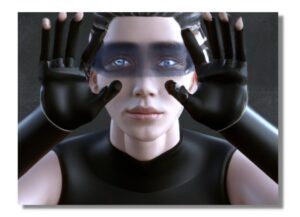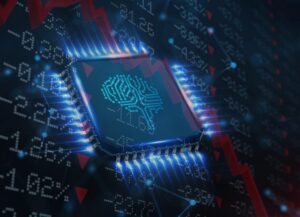- Last Updated – December 8, 2022
Introduction
Technology doesn’t stand still; every so often, a new disruptive innovation breaks the existing norms. Risk analysis stats show that as much as 90% of new products fail. Market conditions do cause inconsistencies in these stats on different economies. But innovation’s very nature is disruptive – and that’s why it is so important. And due to that, despite higher chances of failure, disruptive technology keeps on coming up. Such technology transforms industries with groundbreaking ideas, and creates new markets, reshaping existing ones. Disruptive products, services, and businesses disrupt traditional methods of production and distribution. Such products are cheaper, faster, and have more efficient ways of doing things. And who wouldn’t want that? Disruptive technologies are those that improvise the way we live, work, and play. Disruption tightens the competition amongst companies, for us to keep on getting better products, and not a better version of the same product each year.
Disruptive Technology and Innovation
One way connoisseurs of disruptive tech are getting what they want is through “disruptive innovation.” Disruptive innovation is the process of introducing new goods and services that radically change the way businesses and consumers interact. Such upheavals have already disrupted entrenched markets, such as the taxi industry. No, disruptive innovation isn’t only about technology. In fact, even whole new business models, like Airbnb, disrupt conventional wisdom. Companies that successfully adopt disruptive innovations hold a competitive edge. They can provide lower cost, higher quality goods, and services, and have access to new markets.
“Billions of dollars worth of research knowledge lie dormant at American universities waiting for the right disruptor to come along and create a business.”
― Jay Samit, Disrupt You!: Master Personal Transformation, Seize Opportunity, and Thrive in the Era of Endless Innovation
Disruptive technology has been changing the way businesses are run since the 1980s. And with time, more businesses are getting aware of that.
Here is a chart showing the changes in people’s and businesses’ search trends about disruptive innovation in the past 15 years:

The nature of the above trend shows that businesses had become well aware of disruptive technology by 2017. So, it’s been a while since businesses have been trying to stay ahead of the curve to remain competitive. In the late 2010s, companies were already investing heavily in the latest technological advancements and were eager to get the most out of them. That led to more focus on some of the most disruptive innovations in the market, such as blockchain, VR, AR, and different sub-fields of machine learning. And we are clearly seeing the results now in 2022:
Disruptive technology in 2022
2022 has been a big year for Disruptive technologies. In fact, with the breakthrough of Art generators, people are even calling this year by that name. The announcement of Metaverse, a mixed reality concept, faced heavy criticism and still does one year later, in 2022. From futurists to scientists, artists to International organizations, everyone is talking about the next big technological leap.
NATO’s concerns about disruptive technology
NATO, a technological forefront for more than 7 decades, is also getting concerned about disruptive technologies. The organization has taken steps to address the issue in the past few years. In 2020, the NATO Advisory Group on Emerging and Disruptive Technologies published its first annual report. It made four key recommendations for NATO. In 2021, the Leaders agreed to launch the Defence Innovation Accelerator for the North Atlantic (DIANA) and to establish a NATO Innovation Fund. And recently, in 2022, NATO Foreign Ministers endorsed the charter for DIANA. Furthermore, they also agreed on the framework for the NATO Innovation Fund. It means NATO pretty much knows what future to expect with the disruptive nature of technology.
Common Examples of Disruptive technology
The most common example of disruptive technology is how web series disrupt the movie and entertainment industry. Such platforms offer more creative freedom for the creators and are more convenient for the consumers. Take blockchain for example; it has revolutionized the way digital transactions are conducted. It has eliminated the need for a centralized authority. Cloud computing is yet another disruptive technology that has replaced USBs, DVDs, and other storage media. Voice typing, for example, has replaced the traditional keyboard. Social media has disrupted traditional media, allowing people to share their stories with the world. Augmented reality, for example, will continue to transform the way we live and work. As of 2022, the state of AR technology is not that disruptive, not even close to its fullest potential. But companies are unveiling new and exciting AR experiences, and the future looks bright.
We’ve shown you the most common examples of disruptive innovations, adjusting them within a paragraph. Further in this article, we’ll take a look at 8 examples of Disruptive technologies in brief.
AI-generated art
Traditionally, humans have been creating art using their own creativity and imagination. However, with AI-generated art, we are using computers for that. AI art generator is a disruptive technology because it is changing the way we create and distribute art. Algorithms mimic the style of a particular artist or type of art create AI-generated art, or mix them up. AI art generators can’t do all that “outta nowhere”; humans have programmed them for that. AI can generate art in a wide variety of styles, and of course, faster than humans. This gives people more choices to find artworks that they enjoy. If you have created hundreds of artworks in the past, they are now just as good as AI-generated art pieces.
Look at this art generated by DALL E 2:

Other disruptions AI-generated art causes
AI-generated art is disrupting more than one market. Apart from the art industry, here are the sectors this technology disrupts:
Art education
AI-generated art significantly disrupts art education. For example, art students are now more likely to pursue a career in data science than in traditional art forms. Due to this disruptive technology, the number of art students could decrease by 44% by 2027. Traditional art education is something that provides an actual platform. A platform for the development of fundamental skills, understanding of materials, tools, and appreciation of art history. In fact, the top countries in Maths and science test scores, including Japan, have Art education as mandatory. This shows how big a price disruption of art education is to pay.
Currency
AI-generated art promotes NFTs (Non-Fungible Tokens). Such tokens allow artists to create and monetize digital art, without the need for physical prints. This disrupts the well-established mainstream currencies.
Good or bad?
AI-generated art is disrupting a lot of markets; and apart from art education, it is also disrupting the way we view creativity and innovation. It’s true that the ways to think about creativity and innovation should be updated with time. However, AI-generated art does this in a way that doesn’t take into account how art is created. In fact, AI is creating art that is very similar to ours. But the process it uses is so different that it is disruptive. As such, it is a bad example of disruptive innovation.
Augmented Analytics
Augmented analytics disrupts traditional data analytics by automating data analysis and providing actionable insights from data. For businesses, there has always been a need to transform data into actionable insights quickly and efficiently. And not only modern but even ancient businesses have recognized this need. They used to collect data manually, by asking customers, and sometimes even by simply guessing. With the rise of computers, spreadsheets started to take over as the primary method of data analysis. But even these were labor-intensive and time-consuming. Then came online data tools and the concept of Big Data. This helped businesses better understand their customers and make better decisions. With these tools and thanks to AI, analytics were more accurate and required less labor. But one thing that was still not available was the ability to quickly and easily analyze large amounts of data in a meaningful way. This is where augmented analytics comes in.
Here are the fields Augmented analytics disrupts:
Computers
With augmented analytics, businesses can access the augmented holograms of analytics at any time, . This disrupts the need of computers. Furthermore, this also disrupts the traditional monitor screen. The analysts simply need to wear glasses all the time to view and analyze the data.
Traditional Analytics
For example, businesses can analyze the real-time data streams from customers/potential customers and make decisions based on that data. Augmented analytics disrupts traditional analytics like Google’s, by automating data analysis and providing actionable insights from data.
Good or bad?
Augmented analytics is an example of good disruptive technology. According to the BCG-WEF project report, 72% of manufacturing organizations use advanced data analytics to increase productivity. And as of now, the most advanced form of it is augmented analytics. It is helping businesses make better decisions and achieve better results. This technology has no demerits.
3D printing
Printing used to be a two-dimensional process. 3D printing, however, has changed the game. 3D printing is a disruptive technology, revolutionizing different industries by allowing more complex designs and reducing costs. It creates objects by depositing successive layers of material, forming a three-dimensional shape. Along with the elimination of production steps, 3D printing saves time and money. It also allows for a much larger variety of shapes and sizes, making it suitable for highly specific and unique products. Furthermore, this innovation is environmentally friendly, cutting down waste and energy consumption. It can also produce objects with intricate details that can’t be achieved with traditional production methods. 3D printing has opened doors to more efficient and cost-effective production, changing the way we create products.
Here are the different sectors 3-D printing disrupts:
Medicine
In medicine, due to 3D printing, surgeons can now print custom implants for their patients. 3D printing technology has already assisted with creating artificial organs, prosthetics, and more. Furthermore, is also helping reduce costs for medical equipment and supplies. All this will reduce the cost of healthcare because it will reduce the cost of medical devices and implants. As such, 3D printing disrupts the traditional costly healthcare system.
Manufacturing
Manufacturing required a lot of time, money, and human involvement. Say goodbye to costly tooling, long lead times, and expensive inventory. In fact, a company can profit as high as 90% from 3D printing, compared to the material cost alone. The margin does reduce when you add labor and overhead costs. But still, comparing it to other traditional manufacturing processes, the profit margins for 3D printing are still much higher.
3-D printing eliminates the need for large-scale, up-front investments. Manufacturing companies can now produce parts on-demand, on-site, with no minimum order or delay. 3-D printing also helps manufacture robotic parts. This disruptive technology also enables faster, lighter, aircraft parts, reducing manufacturing costs and time; disrupting the aerospace manufacturing industry.
Here is an example of 3D printing an object:

Food
3-D printed food isn’t something brand new. The food industry is one of the biggest industries 3-D printing has the potential to disrupt. Currently, very few restaurants are using 3-D printing to create their food. The problem starts when people start printing food at home, reducing the need to go to restaurants. According to stats, this is soon to become a reality. Around 20% of consumers are expecting to print food by 2027. However, do consider the fact that the FDA has not approved 3-D printed food just yet.
Good or bad?
3-D printing is an example of good disruptive innovation. It changes the way companies make products, making them faster, cheaper, and more efficient, reducing the need for costly tools and labor. This also enables faster customization and personalization of products. This makes 3-D printing a powerful tool for businesses, allowing them to create and market products faster and more efficiently. For consumers, 3-D printing provides an opportunity to get customized products at a lower cost. This disruptive technology has a positive impact on the economy.
Virtual Reality
Virtual Reality (VR) is a field where definitions change; this disruptive technology replaces our world. VR has the potential to disrupt not only how we interact with technology and the world around us, but the big whole world around us, in every sense of the word. This is made possible by two key components – hardware and software. The hardware is the headset that you wear, which is usually connected to a powerful computer. The software is what creates the virtual world around you, AI-powered software, in most cases.
Here are the fields VR is disrupting:
Movies
VR is a weirdo where you can watch movies in a theater in a virtual environment. Yes, a theater in a virtual environment. And the experience is not that bad, however, it reduces socialization. Virtual Reality is disrupting the movie industry, and the effect is already visible. For example, in the last couple of years, the number of people going to the movies has been decreasing. This is especially true for the younger generation, who prefer to watch movies on their phones or computers. Platforms like Bigscreen VR and CInevr are a few examples of disruptive VR movie theaters.
Education
Education, whether it’s in school or in a university, is a very important part of our lives. However, it’s not always the most fun thing to do. VR changes that; VR makes education fun. For example, instead of reading about the history of the world, students are already experiencing it. VR is the biggest threat to the ongoing education system that prioritizes memorization over understanding. One study showed that a whopping 97% of students prefer VR education over any other form of it.
Travel
Traveling is a very important part of our lives. It’s a way to experience new cultures, meet new people, and learn new things. However, Virtual Reality is reducing our desire to travel. For example, instead of going to the beach, you can just put on a VR headset and experience the beach. Stats show that travel spending has already reduced significantly due to the introduction of VR, powered by other factors including the pandemic. The travel and tourism industry is the major source of income for many countries. VR drastically reduces the income from this sector. If one can experience the Pyramid without going to Egypt, and experience the beauty of the Taj Mahal without going to India, then why would one want to go there? We choose ease, and VR provides us with that; no matter its consequences.
Sports
eSports, as they call it, is a new way of playing sports. Kids are spending more time gaming, instead of playing outside for a long. It’s never a good thing in the first place. And with VR, they can play sports in a big whole virtual environment. VR only adds to the way gaming disrupts the way we play sports. The number of kids, aged 6 to 11, playing video games has increased significantly thanks to VR. And in fact, out of 169 million total gamers in the U.S., 29% are VR gamers. So, VR has played a commendable role in disrupting traditional sports.
Good or bad?
For the most part, VR is a bad example of disruptive technology. It acts as a distraction from more important tasks and can lead to a loss of productivity. As it swipes us away from the real world, VR can make it difficult to focus on our surroundings and the tasks at hand. It can also be isolating, as people can lose touch with their physical environment. VR does improvise education. However, as it disrupts real life, it is a bad disruptive innovation. One disruptive solution to VR is AR. Yes, augmented reality disrupts virtual reality. While VR takes us away from reality, AR enhances reality without making us leave it. That’s how we have to look for solutions as we move forward.
Robotics
Robotics is a disruptive technology that disrupts more than a handful of industries. It is not a new concern either. As of 2022, we can say that robots are starting to have an impact on the economy and society. For example, taking over the jobs that humans do, such as manufacturing and agriculture. Robotics is already leading to large-scale unemployment and social upheaval.
People often mistakenly use “Robotics”, “AI”, and “AI-powered robotics” synonymously. AI is a branch of computer science that deals with the theory and design of intelligent computer systems. It is concerned with the creation of intelligent agents, which are systems that can reason, learn, and act autonomously. It is not necessarily related to robotics. However, AI-powered robotics is the application of AI technology to the field of robotics..The most disruptive technology among the three is AI-powered robotics. And most physical robots today, even industrial ones, possess some sort of AI.
Robotics deals with the design, construction, operation, and application of robots. And it disrupts a variety of fields, the most important ones being:
Jobs
According to estimations, robotics will replace over 50 million jobs worldwide over the next decade. That’s a lot. Yes, this disruptive technology does create room for new jobs and all. However, the problem is that the “replacing the jobs with new ones” part can not happen suddenly. Throughout the process of robotics’ disruption, people will have to sacrifice their valuable jobs.
Education
Robotics is disrupting the healthcare industry by providing a new level of precision and accuracy to medical procedures. Robots are able to perform complex surgeries with unprecedented accuracy, and they can even deliver drugs and other treatments. This is revolutionary, as it has the potential to save millions of lives. Human-Robot hybrid doctors already exist, with the role of the “Robot” part getting heavier with time.
Military
Robotics is disrupting the military too, as countries are using robots to fight wars. Robots programmed to perform complex tasks, such as reconnaissance, and surveillance, help in various things in the military. For example, robots can detect and defuse bombs. However, they can not replace human soldiers in a war due to the nature of war itself.
Shipping
Robotics disrupts shipping by providing an efficient and cost-effective way to move goods. Automated vehicles and drones can deliver packages autonomously and quickly. Amazon’s new shipping drone MK30 is a perfect example of robotics technology disrupting shipping.
Food service
Robotics is revolutionizing food service. Automated robots can prepare and serve food faster and with fewer mistakes. Restaurants like ones powered by Brightloom (then Eatsa), are using robots to prepare food quickly and accurately.
Search and Rescue
Robots are having their role in the search for natural disaster survivors. Search and rescue robots have proven themselves time and again, entering dangerous environments, collecting data, and providing first responders with valuable information. Robotics is disrupting the search and rescue (SAR) process, replacing some jobs of rescue experts with robotic counterparts. For example, UAVs are replacing the need for humans to traverse the dangerous terrain.
Good or bad?
Robotics is a good disruptive technology for mankind, but a bad one for capitalism. But for capitalists, it is a worry, as robotics can lead to automation and reduce the need for manual labor. It has the potential to disrupt the entire world, including how we look. Robotics disrupts jobs, but we’ll have to see whether it creates career opportunities in the form of new technology. Capitalism is one of the main reasons why we have advanced this far, so this could be seen as a bad disruptive innovation in that sense.
Natural Language processing
Natural Language Processing (NLP) is a disruptive innovation that has replaced manual labor in fields like data analysis and text understanding. Its ability to understand and interact with human language enables breakthroughs in many industries. NLP can detect sentiment in text, provide insights from data, and help automate customer service. Its impact on the way businesses operate is undeniable. NLP help build intelligent chatbots, understand customer intent, and even improve search engine optimization. And that’s really really cheap. For example, Google cloud’s NLP entity sentiment analysis costs $0.5/1000 units for 5-20 Million units, and $2/1000 units for 5k-1M units. That’s much cheaper than hiring a human to do something equivalent; it would have cost at least 10x more than that.
Here are the sectors NLP is a disrupting technology:
Voiceovers
One of the most obvious ways that NLP is disruptive is that it’s replacing human voiceover artists. This is already happening in the advertising world, where NLP generates realistic-sounding voices for commercials and other videos. NLP also makes creating realistic-sounding voices for navigation systems and other voice-based applications possible. At Fiverr, the average cost of hiring a good native voiceover artist is around $150 per 1000 words. With NLP-based solutions, this cost drops to almost 0.
Customer Service
Another way NLP is disruptive is how this technology is automating customer service. This is already happening to a certain extent, as chatbots are now handling simple customer service inquiries. It replaces the need for human customer service agents. This allows companies to focus their resources on other areas.
Journalism
By automating the news-gathering process, NLP allows journalists to focus on reporting and analysis. This disruptive innovation is transforming the media landscape by providing faster information. For example, in case of a natural disaster, NLP-powered news bots can aggregate data in real time. If there are many developments in the same story, NLP bots can quickly update the news with the latest information.
Good or bad?
Natural language processing is a good disruptive technology. It has enabled developers to create applications that can process, understand and respond to human language. NLP has enabled computers to understand the intent behind a user’s query, leading to improved accuracy in search engine results, as well as more relevant and useful responses from digital assistants. However, some people use NLP to generate fake news, which can have a negative impact on society. And that’s the size of the price tag that comes with every new innovation, not exclusive to NLP.
Biometrics
Biometric technology is disruptive because it is changing the way we authenticate ourselves. Still, that accounts for only 75% of Americans, the rest of whom have never used biometrics. Rather than using something we know (like a password), biometrics uses something we are (like our fingerprints or iris patterns). This is not only more secure, but it is also more convenient. We no longer have to remember a bunch of different passwords. We can simply use our biometrics to log in to our devices and accounts. And it is not only limited to password management. Biometrics can also be useful for things like physical access control, time and attendance tracking, and even identity verification. It is also replacing traditional KYC verification methods that are no longer as effective.
Good or bad?
Biometrics is a good disruptive innovation. Some people are concerned about the privacy implications of biometrics. But these concerns are typically overblown. Biometrics is a little more invasive than other forms of authentication, such as using a key or a PIN number. But it is a more inclusive technology, as it can be used by people of all ages and abilities.
Video calling
Video calling is a disruptive innovation for replacing two things: the necessity for real-time face-to-face interaction in many cases, and the necessity of phone calls. Now the two are completely different things. You can have a face-to-face interaction without even being in the same room, and you can do it without even having to leave your desk or set down your work. And, of course, you can do it without using up any minutes on your phone plan.
The telephone was once a disruptive technology, too. It destroyed the telegraph, which was the primary means of long-distance communication at the time. The telephone was much more convenient, and it quickly became the preferred method of communication. The same thing is happening with video calling. It is simply more convenient than meeting in person, and it is quickly becoming the preferred method of communication for many people.
In fact, hologram-powered augmented reality is well-set to replace video calling in the future. And after that, we will be calling AR a disruptive technology for replacing video calls. That trend just keeps on going.
Good or bad?
Video calling is definitely a good example of disruptive innovation, as it narrows down the world. And there is not even a heavy price tag on it.
Digital banking
As of 2022, almost 90 percent of the money available in the world is digital. In other words, only a tenth of the world’s money exists as physical cash. The rest is digital: numbers on a screen or computer. Humans invented physical transactions in form of coins 2500 years ago. Online banking is a disruptive technology that has changed that long-lasting method to transact.
In fact, it’s likely that within our lifetimes, physical money will disappear entirely.
There are a number of reasons for digital banking taking over physical money. For one, it’s simply more convenient to use digital money. You can transfer it instantaneously, without having to worry about things like exchange rates. But there are other, more important reasons. Digital money is more secure than physical money. It’s much harder to counterfeit, and it’s nearly impossible to steal. And then there’s the fact that digital money is simply more efficient. Banks can hold more of it, and they can lend it out at a lower cost.
Good or bad?
Online banking is a good disruptive innovation. It has changed the way people interact with their finances, making it faster, easier, and more secure. The use of online banking also reduces overhead costs for financial institutions. There are no cons to this innovation.
Display Ads
Advertisements have a history. In the beginning, they were a way for businesses to communicate their products to potential customers through papers and magazines. TV ads then came along and changed how businesses reach their target audiences. And now, display ads are a disruptive technology that is changing how businesses advertise again. Display ads are digital advertisements that appear on websites. They come in all shapes and sizes and can be static or animated. Display ads are usually served through ad networks, which are companies that match advertisers with websites that are willing to host their ads. You may think of display ads as annoying and intrusive, but they pretty much drive the digital economy.
Display ads have disrupted traditional advertising methods by providing new creativity in advertising. This innovation revolutionizes how businesses advertise. With display ads, businesses can target specific audiences and track the success of their advertising. High-end companies even pay hundreds of dollars per single Ad click to reach their target audience. You see how important it is for a business to reach the audience they actually want; the price eventually pays itself back. The future of advertisement is even scarier. Meta will reportedly track and scan your eyes to show you relevant ads in the future with metaverse. As technology advances, so will the ways businesses reach their target audiences. But it is necessary to recognize the limits. The meta’s example, for some, is where it goes something beyond disruptive.
Good or bad?
A display ad is one such disruptive innovation that is not necessarily good or bad for consumers. However, for marketers and advertisers, it has been a great way to reach out to customers.
Electric Cars
The energy sector is facing a disruptive innovation—electric cars. The energy sector is one of the biggest drivers of the world’s economy, In fact, about 29% of global energy is used for transportation. But the new electric cars are offering a clean, efficient, and cost-efficient alternative to traditional combustion vehicles. They are also much quieter. Stats show that continuous usage of EVs is roughly 21% less expensive than petrol or diesel-powered cars. This makes them a more attractive option for many consumers. By 2030, electric vehicles will cover 15% of the global automotive market.
Good or bad?
Electric vehicles are good for the environment, disruptive to the auto industry, and shaky to the energy industry. From the perspective of mankind, and the planet, electric cars are an example of good disruptive innovation.
Conclusion
Embracing disruptive technology and innovation is essential for generative success. A good sentence to end this article is: “Innovation requires disruption to reach success.” A disruption that shifts us from our current mode of thinking is the most valuable. However, disruptive technology like Virtual Reality and AI art generators shift us away from our own traditions and values. Still, most of the time, these disruptive innovations are beneficial and offer new and valuable opportunities. Competition and Capitalism are interconnected with disruption, and these three key elements drive innovation, hence, the advancement of society.
- AI-Powered PCs: Overhyped Trend or Emerging Reality? - August 21, 2024
- Princeton’s AI revolutionizes fusion reactor performance - August 7, 2024
- Large language models could revolutionize finance sector within two years - March 27, 2024



